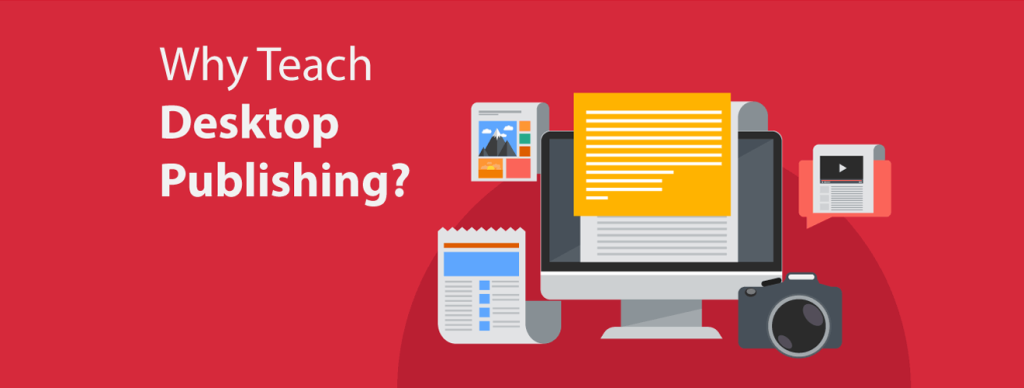Desktop publishing is a technology skill used every time a publication is created. Desktop publishing involves using the computer to create visual displays of ideas and information by combining images and text to produce an attractive layout and design to effectively communicate a message. Common publications include brochures, postcards, newsletters, flyers, and posters.
Many school assignments have students demonstrate their learning by creating products. Often these are designed to target a particular audience. For example, students may write and illustrate a story for children, create a newsletter for teenagers, or produce a biography about a significant historical figure. The decisions they make regarding the layout and design are critical to reaching the target audience.
Desktop Publishing Decisions
Students may not even be aware of their thoughts during the creation process. However, they are constantly asking themselves questions and generating answers to make design decisions. For example:
- Will the text be easy to read? What font, style, or size is best?
- What information is the most important and should be a larger font size?
- What colors should I use to attract attention? What color is best for the WordArt, text, shapes, or border?
- What colors complement one another so that my publication has a consistent design?
- What colors best suit my topic?
- How can I divide the information into logical sections to make the content clear?
- How can I arrange the content to create an appealing and balanced layout?
- How can I create white space between the content to avoid clutter?
- How can I fill large empty spaces to create balance and enhance the message?
- How can I frame information to anchor it on the publication?
- Which pictures should I use to illustrate the message clearly?
- How can I format pictures attractively to enhance the message?
Tips for Teaching Desktop Publishing

Many students will automatically be able to make effective design decisions and their work will look fantastic! However, other students will not understand how to make choices that will enhance their work, and often their final product seems disorganized or visually unappealing. The decisions they make are often based upon what looks new, fancy, or fun rather than on what helps to communicate the message to a target audience effectively. To promote high-quality work, a good idea is to explicitly teach desktop publishing to your students. Some suggestions include:
- Make a Copy: When students have finished their work have them create a copy. Now have them play with the colors, layout, and other design elements. Can they make their work look even better?
- Undo and Redo: The computer takes the risks out of design decisions. With the click of the mouse an action can be removed or repeated. Encourage your students to explore various design choices. Explain that if they don’t like the way something looks, they can just click the Undo button and the last action is removed. If they change their mind after clicking Undo, they can click Redo to put the object or formatting selection back.
- Samples: Show samples of completed work. Include products that have both a strong and weak layout and design. Have a discussion about what is appealing about each publication and have students offer suggestions to improve the work.
- Build a Publication: Provide students with a template that has information and images. Have them transform the elements into an attractive publication. Upon completion, post the publications in the room and discuss the design choices made that make each one unique.
Why Teach Desktop Publishing?
- Learning becomes personally meaningful when students create publications for a target audience. They have a real-world reason to communicate information effectively.
- Decision making skills are developed when students create their own documents. They need to think: How will the document look? Are the parts balanced? Will the reader find the document easy to navigate and understand?
- Creativity is enhanced when students are given the challenge of making their projects ‘look professional’.
- Higher level thinking skills are used when students are required not only to write the content of the document but also recognize the needs of the reader. They need to consider how to present the information in a way that makes it easy to understand and attractive for the viewer.
Desktop Publishing is Fun!
The great news is that desktop publishing can be fun! There are so many products your students can create using desktop publishing software. Even primary students can enjoy adding graphic elements to their projects to create a great looking document using a program such as Microsoft Publisher, Microsoft Word, or Microsoft PowerPoint.
|
|
|
|
When selecting a product you want students to create using a desktop publishing program, it is essential to determine the technology skills that are required. In addition, you must consider the students’ grade level and previous computer experience prior to selecting a task. Desktop publishing skills can be grouped into basic and advanced levels of difficulty.
| Basic Desktop Publishing Skills: | Advanced Desktop Publishing Skills
|
Integrating desktop publishing skills in your technology program can create meaningful, motivating, creative, and real world learning experiences for students.
